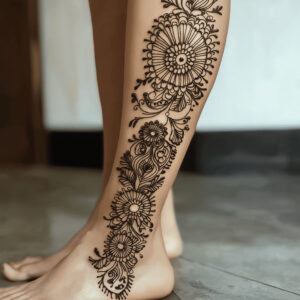Arabic Mehndi Designs for Legs: The Flow of Art on the Body
There’s something captivating about the way Mehndi adorns the body. It moves with us, flows over our skin like a second layer of expression. For me, as someone who has worked extensively in the world of sculpture, where the body becomes a medium for art, Arabic Mehndi designs for legs evoke a similar sensation. The way the lines and patterns wrap around the legs is reminiscent of how I carve and mold shapes, creating something that interacts with both space and movement.
Arabic Mehndi designs, with their bold, flowing patterns and elegant use of space, have always stood out to me. Applied to the legs, these designs take on a life of their own, becoming a bridge between the body and the environment around it. There’s a sense of fluidity in these patterns that I find particularly inspiring—like watching wind ripple across a field of tall grass or the waves of the ocean as they crash against the shore. The curves of the Mehndi seem to mimic these natural movements, bringing the legs to life in a subtle yet powerful way.
Sculpting the Body with Mehndi
In the same way that I approach sculpture—where each curve of the body informs the shape and flow of the artwork—Mehndi artists apply their designs with a deep understanding of form and space. When applied to the legs, Arabic Mehndi creates a beautiful interplay of lines and curves that move naturally with the body. The vines, leaves, and floral motifs wrap gracefully around the legs, accentuating their natural shape while maintaining a sense of openness and elegance.
I’ve often thought about how art, particularly sculpture, is about more than just creating something to be viewed. It’s about creating something that feels alive, that interacts with its surroundings. Mehndi on the legs does exactly that. Whether it’s a simple floral design starting from the ankle and winding up toward the knee, or a more elaborate pattern covering the entire lower leg, the design moves with the person wearing it, transforming each step into a work of art.
One design that particularly struck me was a large floral motif that started at the base of the foot and extended up to the knee, surrounded by delicate, flowing lines that mimicked the natural shape of the leg. This reminded me of the way I work with the curves of the human form in my sculptures—allowing the natural beauty of the body to inform the art, rather than trying to impose an external structure on it.

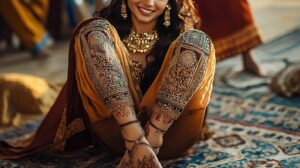

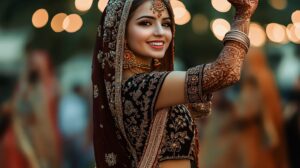


The Elegance of Space: Less is More
What I admire most about Arabic Mehndi designs is their use of negative space. Unlike Indian Mehndi, which often fills every inch of the skin with intricate detail, Arabic Mehndi allows the skin to breathe. There’s a balance between the bold lines and the bare skin, creating a design that feels open and airy while still being incredibly detailed.
This approach is similar to how I work with space in my sculptures. The empty spaces around a form are just as important as the form itself—they give the viewer room to breathe, to step back and appreciate the artwork in its entirety. Arabic Mehndi on the legs achieves a similar effect. The bold floral motifs, geometric patterns, and flowing lines are not crowded by unnecessary details. Instead, they stand out more because of the space that surrounds them.
I recently saw a design where a simple geometric vine wrapped around the calf, with small floral accents scattered along the line. The design didn’t cover the entire leg, but the negative space around it created a sense of elegance and movement. It was reminiscent of the way a sculpture interacts with the air around it—how the space between elements can create tension, depth, and beauty.
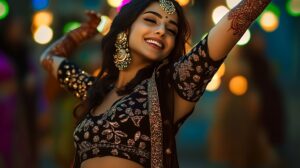

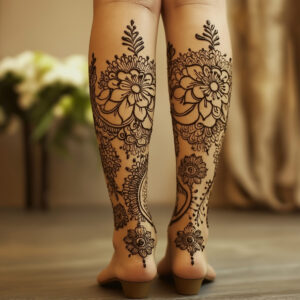

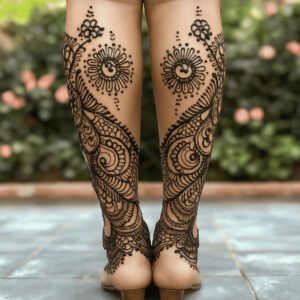

Mehndi as Movement: Art in Motion
One of the most beautiful aspects of Arabic Mehndi designs for legs is the way they move with the body. Much like how my sculptures are meant to be viewed from different angles, Mehndi designs reveal new details with each step, each shift in position. As the wearer walks, the patterns seem to come to life, creating a sense of fluidity and grace.
This concept of movement is central to my work as an artist. Whether I’m shaping clay or observing the way the wind moves through a field, I’m always thinking about how form interacts with motion. Mehndi on the legs, particularly Arabic designs, embodies this idea perfectly. The flowing lines and swirling patterns mimic the natural movement of the body, making each step feel like part of a dance.
I once watched a bride’s legs adorned with a full-leg Arabic Mehndi design, the patterns curving up from her ankles to her knees, creating a sense of unity and flow. As she moved, the Mehndi seemed to follow her every step, wrapping around her legs in a way that felt both natural and artistic. This experience reminded me of the way I approach sculpture—where the shape is never static, but always evolving as you move around it.
A Perfect Balance of Art and Body
For me, Arabic Mehndi designs for legs are a perfect reflection of how art and the human body can work in harmony. Much like the sculptures I create, Mehndi enhances the natural beauty of the form it adorns, moving with the body rather than against it. The bold lines, flowing patterns, and careful use of space in Arabic Mehndi create a design that feels alive, constantly changing and evolving with each movement.
Whether you’re preparing for a wedding, a festival, or simply want to adorn your legs with something beautiful, Arabic Mehndi offers a stunning way to express yourself. It’s more than just decoration—it’s a form of art that moves with you, bringing together the natural beauty of the body and the creative power of design.
Keep Exploring Mehndi Art:
- Back hand Mehndi designs for kids – Discover playful and creative Mehndi designs for children, perfect for adding a touch of fun to their special occasions.
- Indian Mehndi designs back hand – Explore intricate and traditional Indian Mehndi patterns that adorn the back of the hand, combining elegance with cultural depth.


